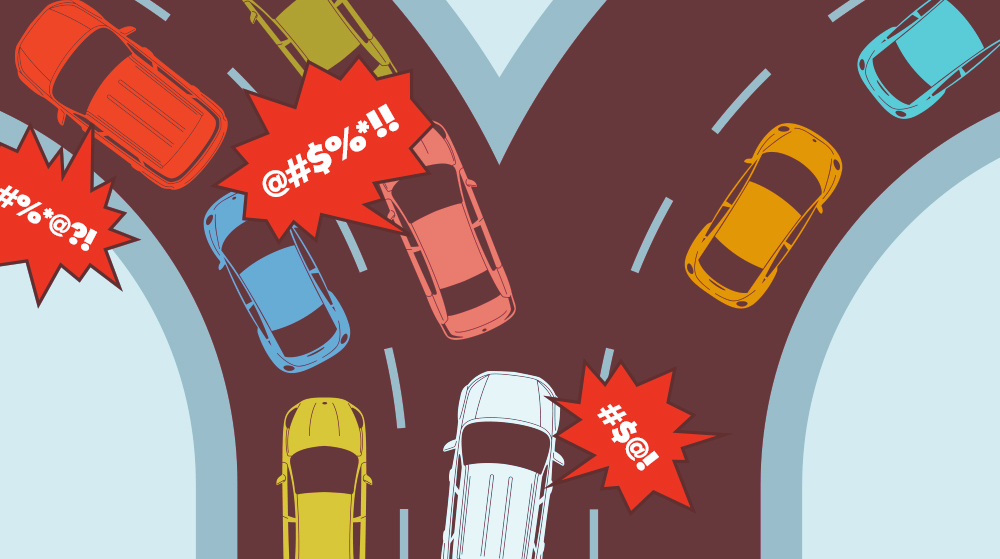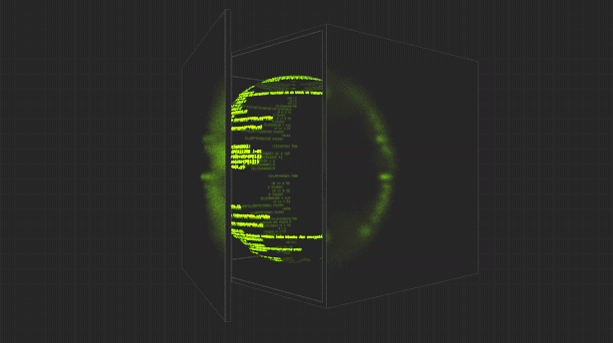The Road Less Traveled
Two roads diverged in a wood, and I—I took the one less traveled by,And that has made all the difference.—Robert Frost
On the road, I always try to follow the example of Robert Frost, and I am sure you do too. Every time I drive, I look for the road or lane less traveled. Almost invariably, I find myself on the road more crowded, doomed to fritter away precious time while the cars on the other side whiz by — or so it seems. Why does the road not taken always seem less crowded? Why is this frustration so universal? It’s a puzzle both mathematics and psychology claim to explain, so let’s explore it with some puzzles of our own.
The mathematical or statistical explanation is called selection bias. It’s a simple idea: The busier road has more drivers on it, so if you sample a bunch of drivers randomly, more of them will be from the more crowded road. How large is this effect? Let’s find out in our first problem.
Question 1: If I want to drive from my home in Connecticut to the Quanta Magazine offices in New York, I have two perfectly good roads to follow: the interstate highway I-95, or the picturesque Merritt Parkway. Let us say the drivers of 200 cars independently and randomly make their choice between these two roads with a 50 percent probability of choosing a given road. Assume that there are no other cars on the road. How many more of the 200 cars end up on the more crowded road? (Update: The solution is now available here.)
It’s not an easy calculation, and if you can’t do it, make a guess. The exact number is not important — this problem introduces the neat puzzle that follows. There are a significant number of extra cars on one of the roads, just by chance, even if the probability of taking either road is the same. And because there are more cars, you and other drivers are more likely to be among them. Can this really be the cause of road-choice frustration?
Perhaps, but psychologists point to different explanations — the effect of emotional arousal on memory, followed by confirmation bias. We normally expect to have a smooth ride, so if the traffic is obliging, we don’t react emotionally — it’s what we expected all along. But if we are stuck in traffic on a crowded road, we do have a strong emotional reaction, and we remember the incident much more vividly. It colors our outlook disproportionately, and we start to feel that we always take the busier road. This feeling is reinforced every time this happens, as it will from time to time by chance, and these incidents just “confirm” our suspicions that the world is stacked against us. This is the psychological explanation not just for driver’s frustration, but for a whole host of eponymous laws related to frustration such as Murphy’s law — “If anything can go wrong, it will” — and my favorite, “Fetridge’s law,” which states that “important things that are supposed to happen do not happen, especially when people are looking.” This last one affects the parents of little children quite a lot!
So is it all in our heads? Let’s turn back to mathematics. The calculation of the first problem is not the whole mathematical story. Even though a particular driver is more likely to end up on the busier road, there are times when you will be on the road less traveled. Doesn’t that decrease your tendency to overestimate, or engage in upward bias, somewhat?
Let us try to estimate this bias by imagining that there are just two cars choosing one of the two roads at a given time. In this case there is a 25 percent probability that both cars take I-95, a 50 percent probability that there is one car on each road, and a 25 percent probability that both cars take the Merritt. So if you interview the drivers and ask them how many cars they saw, including their own, the expected number of cars for each driver on his or her chosen road comes out to be 0.25 x 2 + 0.5 x 1 + 0.25 x 2 = 1.5. But this is wrong, because if you “interview the roads,” which is the right way to do it, we can see that each road has a total of 0.25 x 2 + 0.5 x 1 = 1 car. So each driver has a perceived upward bias of 50 percent. That’s quite impressive. Is this bias causing our problems?
Question 2: What happens to the driver’s upward bias if there are an average of 100 cars on each road? How many cars do we think he or she sees?
The answer to this problem can be reached by doing intricate calculations, but you can also figure it out by thinking simply, but deeply. The answer may surprise you. If you figure it out, explain how you reached your conclusion.
So after all this, what do you think is the source of “other lane” or “other road” envy? Can selection bias still cause this feeling, but in some other unexplored way? Maybe, as we saw in the last puzzle, our mathematical models are merely scratching the surface of a complex phenomenon and need to be deepened. Certainly, drivers don’t make their decisions independently and there is some form of group dynamics that we need to model. But maybe it’s all in our heads, as the psychologists tell us. Or maybe the universe is really stacked against us. It’s something to ponder the next time you are stuck in bumper-to-bumper traffic. Do send us the results of your cogitations in the comments below.
Happy puzzling. And may the insight be with you!
Editor’s note: The reader who submits the most interesting, creative or insightful solution (as judged by the columnist) in the comments section will receive a Quanta Magazine T-shirt. And if you’d like to suggest a favorite puzzle for a future Insights column, submit it as a comment below, clearly marked “NEW PUZZLE SUGGESTION” (it will not appear online, so solutions to the puzzle above should be submitted separately).
Update: The solution has been published here.




